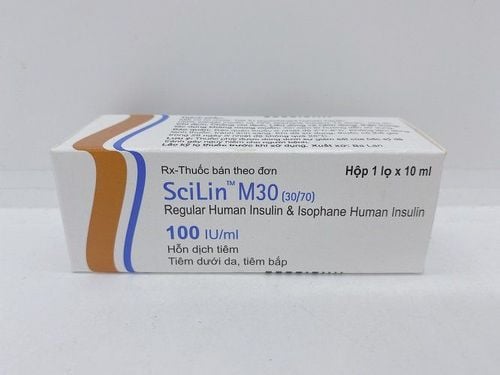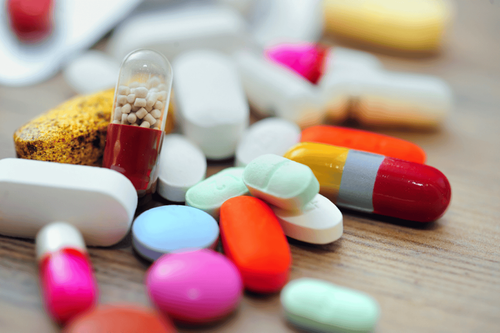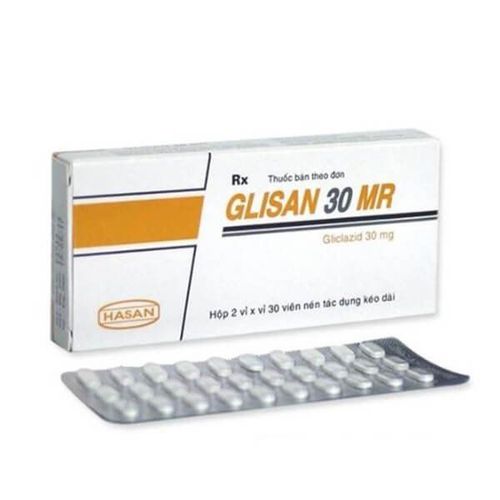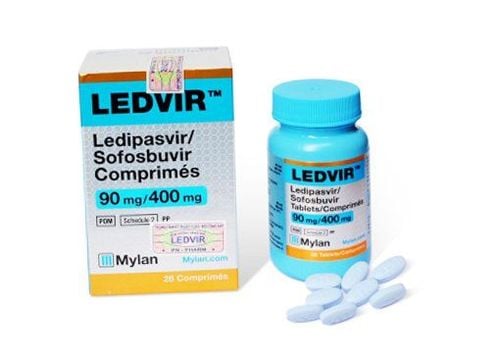This is an automatically translated article.
Gliclazide has the main ingredient Gliclazide 80mg, belongs to the group of hormone drugs. Gliclazide is available in the form of a film-coated tablet, packed in a box of 6 blisters x 10 tablets.1. Uses and indications of Gliclazide
Gliclazide is indicated in the treatment of non-insulin dependent diabetes mellitus.2. Contraindications to using Gliclazide Gliclazide is contraindicated to use Gliclazide 30mg or Gliclazide 60mg in case:
Children with diabetes. People with diabetes after an injury, undergoing surgery, or having an infection. Hypersensitivity to sulfonylurea drugs. People with diabetes complications in the stage of ketosis and acidosis. Pregnant women. Patients with diabetes have entered a pre-coma or coma. People with severe kidney or liver failure. 3. Dosage and how to use Gliclazide How to use: Gliclazide is used orally, a single dose at breakfast. The patient should not break, suck or chew the tablet because it can reduce the absorption into the body.
Dosage:
Starting dose 30mg/day/time. In case blood glucose has been stabilized, continue to use the maintenance dose of 30mg/day/time. In cases where effective glucose control is not achieved, the dose should be gradually increased to 60 mg, 90 mg or 120 mg/day. Each drug increase should be spaced 1 month apart.
How to handle missed dose, overdosage of Gliclazide 30mg or Gliclazide 60mg:
In case of missed dose of Gliclazide, it is advisable to make up for it as soon as possible. However, if it is almost time for the next dose, skip the missed dose and use a new dose. When using Gliclazide drug overdose, it can cause hypoglycemia such as pale skin, sweating, heart palpitations, respiratory failure... Patients need to stop the drug immediately and go to a medical facility. nearest to be treated promptly.
4. Gliclazide side effects
When taking Gliclazide, patients may experience some unwanted effects such as:
Digestive disorders (nausea, belching, diarrhea, loss of appetite, metallic taste in the mouth, appetite or weight gain) . Skin rash and itching, photosensitivity. Red face. Mild hypoglycemia. Change in liver enzyme values, cholestatic jaundice, aplastic anemia, hepatitis, leukopenia, thrombocytopenia, hemolytic anemia, Stevens-Johnson syndrome, agranulocytosis, erythema multiforme, inflammation peeling skin, or a red rash on the skin. If experiencing the above symptoms, the patient should stop using Gliclazide and go to the nearest medical facility for timely examination and treatment.
5. Interactions of Gliclazide Drugs Gliclazide drugs may interact when used together with:
Phenylbutazone drugs. Salicylates. Sulfonamide drug. Coumarin derivatives. MAOIs. B-adrenergic blocker. Tetracycline compounds. Chloramphenicol drug. Clofibrat drug. Disopyramide drug. Miconazole (oral form) and cimetidine. Oral contraceptives. Thiazide diuretics. Phenothiazine derivatives. Thyroid hormones and laxative abuse. 5. Notes when using Gliclazide Care should be taken when using Gliclazide for people who drive or operate machinery Absolutely do not use when Gliclazide has signs of discoloration, mold, watery or expired. use. Above is all information about Gliclazide drug, patients need to carefully read the instructions for use, consult a doctor / pharmacist before using. Absolutely do not arbitrarily buy drugs to treat at home because there may be unwanted side effects.
Please dial HOTLINE for more information or register for an appointment HERE. Download MyVinmec app to make appointments faster and to manage your bookings easily.













